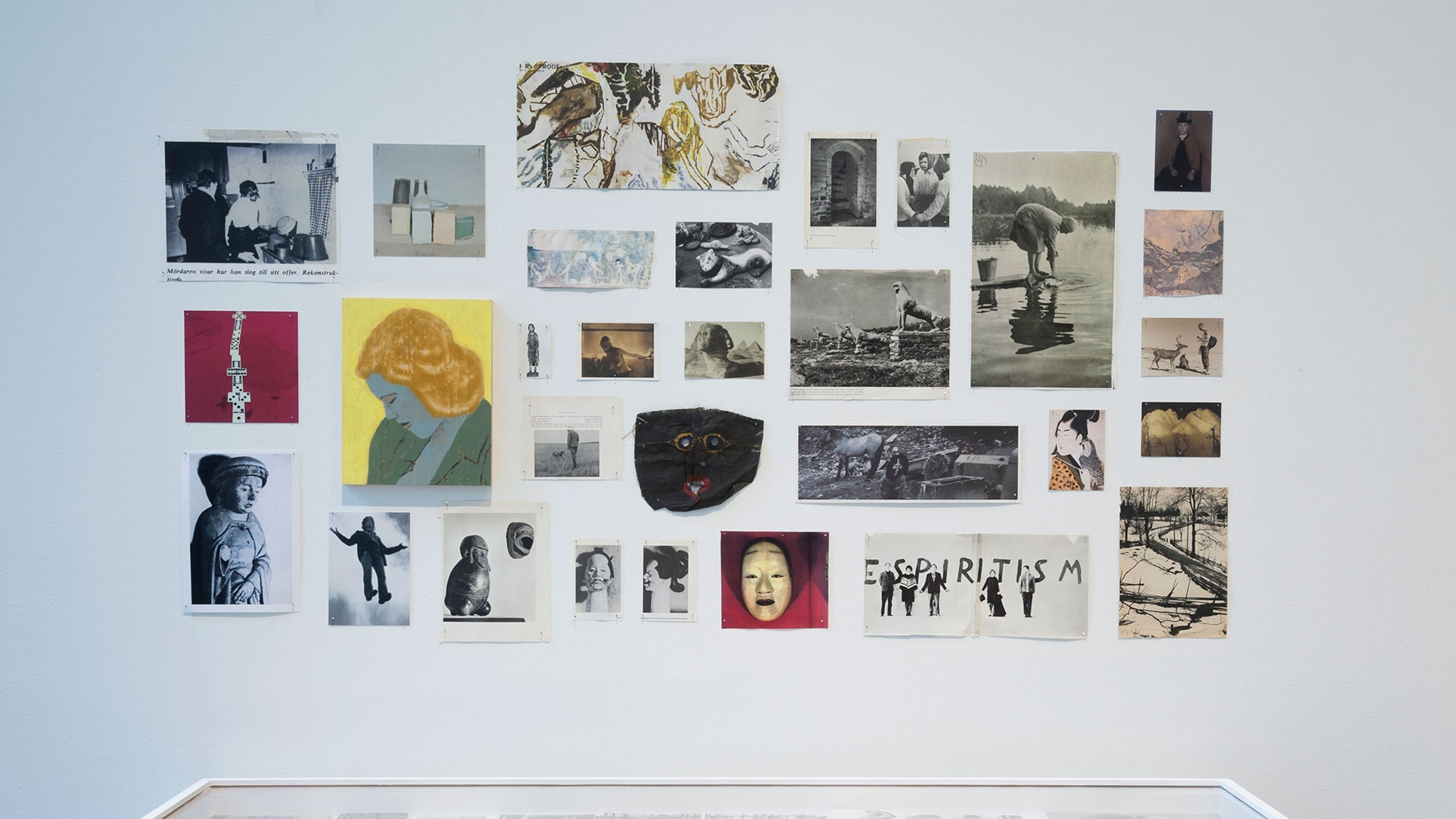Exhibition through February 10, 2019
October 2018
On view at the Contemporary Arts Center in Cincinnati, Mamma Andersson: Memory Banks is a solo exhibition focusing on the artist’s use of appropriated imagery in her dreamlike, evocative paintings. Featuring existing and new works, Memory Banks has been curated by Kevin Moore as part of the FotoFocus Biennial 2018, for which this year’s theme is Open Archive.
On the occasion of the exhibition, we asked Moore for his insights into the production of the show and his long-standing engagement with both the material and immaterial aspects of Andersson’s work.
When were you first introduced to the work of Karin Mamma Andersson? What was the first thing that struck you about her art or that you were interested to engage with as a curator?
I encountered a single work at an art fair and didn’t have much context—a work titled Master’s Voice, which is in the current show. What struck me most at the time was the conflation of inside and outside: a yellow domestic interior with a record player and a Beatles poster and, "outside," what looked like nurses in some banana republic. I was fascinated by the play between interior and exterior and, obviously, different economic worlds. And it was beautifully, delicately painted.
Can you tell us a little bit about the origins of this exhibition? Where does its evocative title come from?
I’ve always noticed the ephemera in Karin’s paintings—the clutter, the stacks of books and photographs—and felt that it wasn’t just accidentally there but somehow ascended to subject matter. It goes so far beyond a painter using source materials for motifs in his or her paintings. This obviously could be many things: the increasing obsolescence of books and printed ephemera; the overproduction of stuff in the world; the personal accumulation of stuff as a record of experience. But it also evokes a kind of living, physicalized memory. The title of the show comes from a particular Mamma Andersson painting titled Memory Bank, in which two ghostlike figures row a boat. Karin suggested the title—with an s on the end—which makes me see all that ephemera as a scattered form of memory, as a very disorganized and human system of "memory banks."
What is this exhibition’s relationship to FotoFocus Biennial 2018? What is the link between a painter and a photography biennial?
I shoehorned this show in on a technicality: Karin’s archive of photographs clipped from books and magazines are displayed in vitrines and on the wall along with the paintings. I like to stretch the definition of photography in the FotoFocus Biennial (which I can do, not working in a museum department of photography) and I always feel that photography should be understood in relation to other mediums. So many painters draw on photographs as source material for their work (Gerhard Richter comes to mind). This used to be some kind of dirty secret, but for most painters, the use of photography isn’t a shortcut or a form of “cheating.” It is more importantly a way to reference or quote the world—to quote realism, if you will. The biennial has other shows of historic and contemporary photography, but I love that there’s room (and tolerance) for a show of paintings, which photography relates to only as a step in the process.
The Archive is a rich subject in art history. I’m intrigued by the inclusion of "Open" in this year’s title—how does this inform the art you have brought together, and in particular, how you see Andersson’s practice?
I like classic subjects that are given a twist, or an update. Open Archive suggests both a will to create new interpretations of existing photo-archives, as well as the act of opening the archive and showing parts of it in relation to art, which is something I’ve done in my other exhibition titled Old Paris and Changing New York: Photographs by Eugène Atget and Berenice Abbott. I’ve shown books and other ephemera in addition to the artists’ photographs. But Open Archive also refers to open source images on the web, all the images anyone can freely take and use in some way, even alter, and the incessant construction and alteration of the archives in our own hands, on our phones, where we keep photos and use Instagram. So it’s an approach to the archive that is both historic and contemporary, all open to discussion. Archives are evolving all the time, old and new.
Karin herself decided which parts of her own personal archive she would reveal and display, images she has clipped and stored her whole life—rather, since she was seven years old—and this selection was made largely in relation to the paintings I wanted to show: the works that include all that clutter and ephemera in them. Interestingly, if you are a perceptive viewer, the source material displayed in vitrines and on the wall can be traced through the galleries, where elements turn up as motifs in various paintings.
Was there anything that surprised you in curating this show or writing its catalogue?
My essay took a dark turn when I tried to get at the mood in the paintings. There’s a deep sense of melancholy, and I wasn’t sure Karin herself would want to articulate that but she later told me that the world is in a "dog days" phase—rot and decay. Yet I also see a lot of love in the work, as corny as that sounds. A desire to preserve and cherish amidst all the rot. That, I think, is what gives the paintings their beauty and poignancy.
Image: Installation view, Mamma Andersson: Memory Banks, Contemporary Arts Center, Cincinnati, 2018. Courtesy CAC. © Tony Walsh
